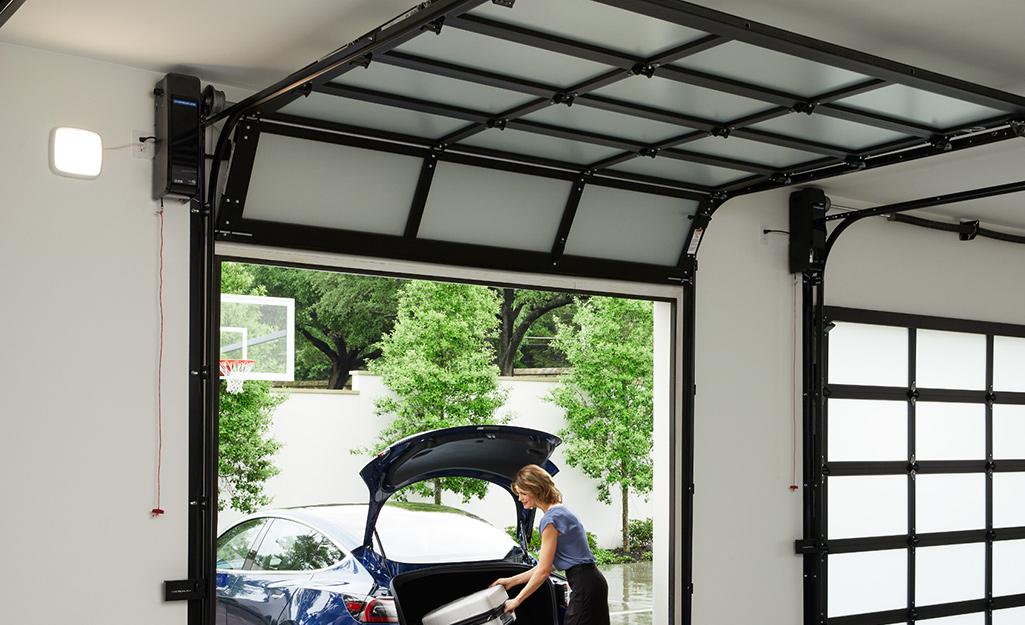A garage door opener that opens but refuses to close can be a frustrating and inconvenient problem for homeowners. When this issue occurs, it not only hampers your daily routines but also poses security risks to your property. If you’re facing the dilemma of a garage door opener that opens but does not close, don’t worry. In this article, we will explore some common reasons behind this problem and provide troubleshooting steps and solutions to help you resolve the issue.

Check Safety Sensors and Their Alignment
One of the primary reasons why a garage door opener may not close is a problem with the safety sensors. Most modern garage doors are equipped with safety sensors located near the bottom of the door tracks. These sensors emit an invisible infrared beam across the door’s path, and if something obstructs the beam while the door is closing, the sensors will detect it and prevent the door from closing to avoid accidents or damage.
To troubleshoot the safety sensors:
- Clear Obstructions: Check for any objects, debris, or even spider webs that might be blocking the path between the safety sensors. Even a small obstruction can trigger the sensors and prevent the door from closing.
- Clean the Sensors: Dust, dirt, or grime on the sensor lenses can disrupt the infrared beam. Use a soft, lint-free cloth to clean the sensors and ensure they are clear.
- Align the Sensors: If the safety sensors are slightly misaligned, they may not detect each other’s signal properly. Adjust the sensors, so they are facing each other directly and have a clear line of sight.
Inspect Garage Door Tracks and Rollers
Another possible reason for the garage door opener not closing is a problem with the tracks and rollers. If the tracks are misaligned or damaged, it can cause the garage door to bind or become stuck during the closing process.
To inspect the tracks and rollers:
- Visual Inspection: Examine the garage door tracks for any signs of misalignment, dents, or damage. Check the rollers to ensure they are moving freely along the tracks without any obstructions.
- Lubrication: Apply a silicone-based lubricant to the tracks and rollers to reduce friction and ensure smooth movement.
- Adjust the Tracks: If the tracks are misaligned, use a rubber mallet and a level to gently tap the tracks back into the correct position.
Verify the Garage Door Limits and Force Settings
Garage door openers have adjustable open and close limits and force settings to control the door’s travel distance and force applied during operation. If these settings are not properly adjusted, the garage door opener may not close the door completely.
To adjust the garage door limits and force settings:
- Check the User Manual: Refer to your garage door opener’s user manual to locate the adjustment screws for the close limit and force settings.
- Decrease Close Limit: If the close limit is too high, the garage door won’t close fully. Turn the close limit screw in the opposite direction to decrease it.
- Adjust Force Settings: High force settings may cause the garage door opener to stop closing, interpreting any resistance as an obstruction. Reduce the force settings following the instructions in the user manual.
Conclusion:
A garage door opener that opens but does not close can be a frustrating issue, but with proper troubleshooting and maintenance, it can often be resolved. Check the safety sensors and their alignment, inspect the garage door tracks and rollers, and verify the garage door limits and force settings. Addressing these common issues restores garage door opener functionality for smooth and reliable operation. For uncertainty or persistent issues, seek help from a qualified garage door technician. A functioning garage door is crucial for convenience and security, so prompt resolution is essential.



Leave a Reply